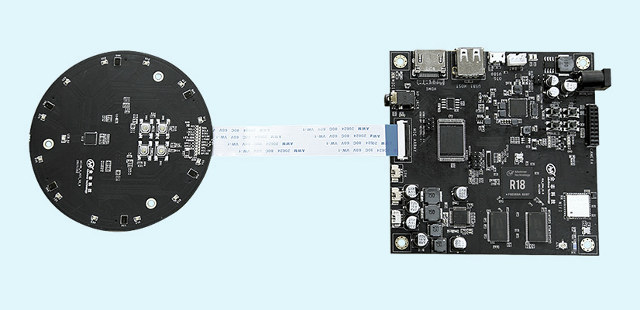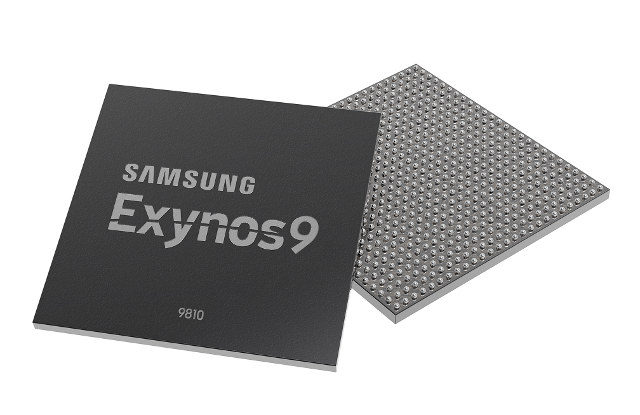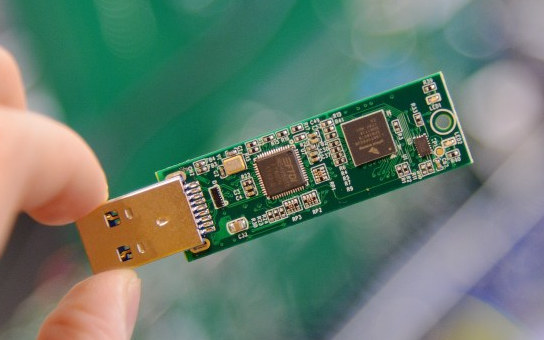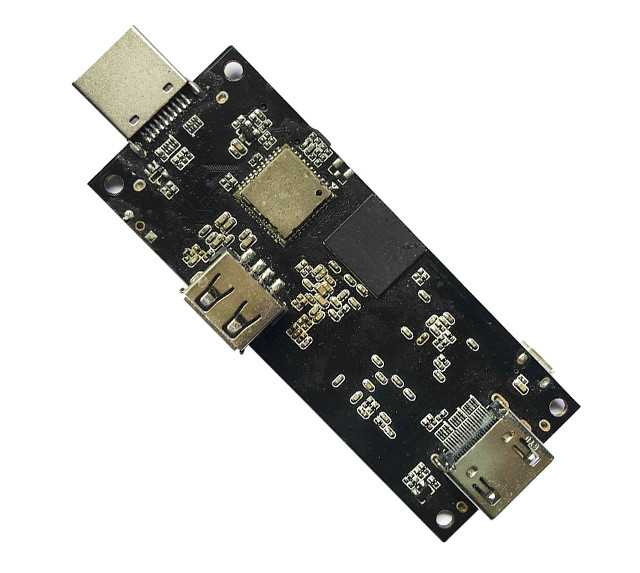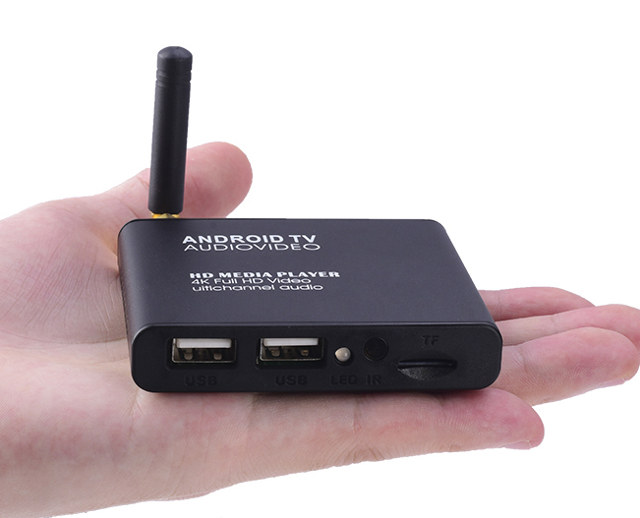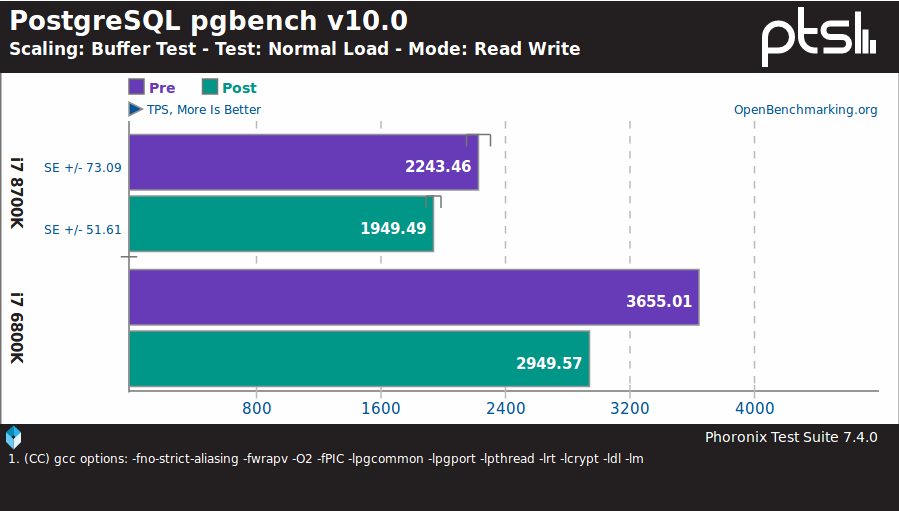Several companies are already offering development kits for Amazon AVS (Alexa Voice Service), but as we’ve seen in the past, those are rather expensive with far-field kits such starting at $349 with kits such as Synaptics AudioSmart 4-Mic Development Kit, or Intel Speech Enabling Developer Kit, and hands-free kits being barely cheaper at $299 and up. But there will soon be a cheaper solution, as Allwinner and SinoVoIP (aka Banana Pi) are working on “SoC-Only 3-Mic Far-Field Dev Kit for Amazon AVS” that includes 3 microphones, and works without special DSP, relying instead on Allwinner R18 processor’s audio codec and capabilities. Allwinner SoC-Only 3-Mic Far-Field Dev Kit for Amazon AVS (aka R18-AVS-EVK) specifications: SoC – Allwinner R18 quad-core Cortex-A53 processor @ 1.15GHz with Mali400MP2 GPU System Memory – 1GB DDR3 Storage – 8GB eMMC flash Video Output – HDMI Audio – 6x Microphones, 2x AEC, AUX and headphone output; GMEMS voice […]
OpenWrt & LEDE Projects Merge Announced
The LEDE project was created in 2016, as a fork of OpenWrt because of a split among developers, so we had OpenWrt and LEDE projects running side-by-side for nearly two years now. However, there were also talks of reunification in 2017 during an Embedded Linux Conference sessions entitled “OpenWrt/LEDE: When Two become One”. The good news is that OpenWrt and LEDE projects (re-)unification is now official, and the project will be known as OpenWrt. Developers will follow the LEDE project rules, merged code is now hosted @ https://git.openwrt.org/, and mirrored on Github (https://github.com/openwrt/openwrt) using the code base of the former LEDE project together with OpenWrt specific patches that meets LEDE’s code quality requirements. The original OpenWrt codebase has been archived on Github. The OpenWrt CC 15.05 release series will still receive some security and bug fixes, but older version will not be supported anymore. The LEDE 17.01 release will still get […]
Samsung Announces Exynos 9810 Octa-core Processor Optimized for AI and Multimedia Applications
Samsung Electronics has just announced the launch of Exynos 9 Series 9810 (Exynos 9810) manufactured with Samsung’s 10-nm FinFET process, featuring an eight core processor clocked up to 2.9 GHz, a gigabit (1.2 Gbps) LTE modem and deep learning-enhanced image processing. Single core performance is aud to be improved by two-fold, while multi-core performance gets a 40% improvement compared to the previous generation chip, which should be Exynos 8895. ARM Mali-G72 GPU is said to bring more realistic graphics along with 20% more performance. Samsung Exynos 9810 specifications with extra cache and memory info from Anandtech: CPU Quad core custom Exynos M3 @ up to 2.9GHz optimized for performance; 512KB L2 cache per core Quad-core Arm Cortex-A55 @ up to 1.9GHz optimized for efficiency; 128KB L2 cache per core GPU – Arm Mali-G72MP18 Memory – LPDDR4x (4x 16-bit @ 1794 MHz) Storage – UFS 2.1, SD 3.0 Display – Up […]
Companies Address Concerns related to Speculative Execution Exploits: Meltdown and Spectre
Yesterday, news surfaced about a “bug” in Intel processors that could be fixed at the operating system level at the cost of a decrease in performance for some tasks, from a typical, and barely noticeable 5% hit, to a more consequent 30% hit for some specific tasks, and as we discussed yesterday I/O intensive tasks are the most impacted by the changes. While Intel (and Arm) are impacted, AMD claims not to be, and the issue was reported by major news outlets and likely impacting the stock price of the companies with Intel stock losing 3.39%, and AMD stock gaining 5.19%, so obviously every company felt the need to answer, starting with Intel’s response to security research findings: Recent reports that these exploits are caused by a “bug” or a “flaw” and are unique to Intel products are incorrect. Based on the analysis to date, many types of computing devices […]
Laceli AI Compute Stick is a More Powerful & Efficient Alternative to Intel/Movidius Neural Compute Stick
Intel’s Movidius Neural Compute Stick is a low power deep learning inference kit and “self-contained” artificial intelligence (A.I.) accelerator that connects to the USB port of computers or development boards like Raspberry Pi 3, delivering three times more performance than a solution accelerated with VideoCore IV GPU. So far it was the only A.I USB stick solution that I heard of, but Gyrfalcon Technology , a US startup funded at the beginning of last year, has developed its own “artificial intelligence processor” with Lightspeeur 2801S, as well as a neural USB compute stick featuring the solution: Laceli AI Compute Stick. The company claims Laceli AI Compute Stick runs at 2.8 TOPS (Trillion operation per second) performance within 0.3 Watt of power, which is 90 times more efficient than the Movidius USB Stick that can deliver 100 GFLOPS (0.1 TOPS) within 1 Watt of power. Information about the processor and stick […]
Realtek RTD1295 based X2 Android TV Stick Comes with HDMI Output, HDMI Input
Realtek RTD1295 processor is found in mid to high end 4K HDR TV boxes with interfaces like SATA, USB 3.0, as well as HDMI input used for PiP or video recording features. Devices equipped with the processor that come to mind include Zidoo X9S or EWEAT R9 Plus TV Box + NAS, both of which are full featured and fairly large devices, running Android 6.0 and OpenWrt. Shenzhen Tomato has unveiled another type of device based on RTD1295 processor: X2 HDMI TV dongle that features both HDMI output & HDMI input ports, and runs Android 6.0 (but not OpenWrt). X2 TV stick specifications: SoC – Realtek RTD1295 quad core Cortex A53 processor @ 1.40 GHz with ARM Mali-T820MP3 GPU System Memory – 1 or 2GB DDR4 Storage – 8 or 16GB eMMC flash + micro SD slot Video & Audio I/O – HDMI 2.0a output, and HDMI 1.4 input Video […]
SRH-X5 is a Palm-sized Android TV Box based on Amlogic S905W Processor
Amlogic S905W processor is a cost down version of S905X processor limited to 1080p60 / 4K30 video output and found in low cost TV boxes such as Tanix TX3 or X96 Mini that sells for just above $20 shipped. SRH-X5 is yet another of those boxes, but the device is more compact than the ones of competitors I’ve seen, as they’ve not included interfaces such as Ethernet or optical S/PDIF, and it could fit into the palm of your hand (although it’s not meant to be). SHR-X5 TV box specifications: SoC – Amlogic S905W quad core Arm Cortex-A53 @ up to 1.5 GHz with penta-core Mali-450MP GPU System Memory – 1 GB DDR3 (2GB optional ) Storage – 8GB eMMC flash (Up to 32GB as option) + micro SD card slot up to 32GB Video Output – HDMI 1.4 output Audio – 3.5mm headphone jack with stereo output/microphone, HDMI audio output […]
Intel Hardware Security Bug Fix to Hit Performance on Windows, Linux…
Many security bugs can be fixed without performance penalty , but according to reports Intel processors have a hardware bug – whose details have not been disclosed yet (embargo) – that seems to affect all operating systems including Windows, Linux, Mac OS, etc…, and the fix may lead to significant performance hits for some tasks. We know a bit more thanks to the Kernel Page Table Isolation (KPTI) patch for Linux that enables the fix/workaround with X86_BUG_CPU_INSECURE feature. The fix used to be called KAISER, and there’s an explanation on LWN about “hiding the kernel from user space” about the issue: On contemporary 64-bit systems, the shared address space does not constrain the amount of virtual memory that can be addressed as it used to, but there is another problem that is related to security. An important technique for hardening the system is kernel address-space layout randomization (KASLR), which randomizes […]


